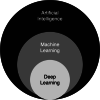Can Tele-Neuro-Ophthalmology Be Useful Beyond the Pandemic?
- PMID: 36609726
- PMCID: PMC9825065
- DOI: 10.1007/s11910-022-01248-w
Can Tele-Neuro-Ophthalmology Be Useful Beyond the Pandemic?
Abstract
Purpose of the review: Neuro-ophthalmologists rapidly adopted telehealth during the COVID-19 pandemic to minimize disruption to patient care. This article reviews recent research on tele-neuro-ophthalmology adoption, current limitations, and potential use beyond the pandemic. The review considers how digital transformation, including machine learning and augmented reality, may be applied to future iterations of tele-neuro-ophthalmology.
Recent findings: Telehealth utilization has been sustained among neuro-ophthalmologists throughout the pandemic. Adoption of tele-neuro-ophthalmology may provide solutions to subspecialty workforce shortage, patient access, physician wellness, and trainee educational needs within the field of neuro-ophthalmology. Digital transformation technologies have the potential to augment tele-neuro-ophthalmology care delivery by providing automated workflow solutions, home-based visual testing and therapies, and trainee education via simulators. Tele-neuro-ophthalmology use has and will continue beyond the COVID-19 pandemic. Digital transformation technologies, when applied to telehealth, will drive and revolutionize the next phase of tele-neuro-ophthalmology adoption and use in the years to come.
Keywords: Artificial intelligence; Augmented reality; Neuro-ophthalmology; Pandemic; Telehealth; Telemedicine.
© 2023. The Author(s), under exclusive licence to Springer Science+Business Media, LLC, part of Springer Nature.
Conflict of interest statement
The authors declare no competing interests.
Figures


References
-
- •• Moss HE, Lai KE, Ko MW. Survey of telehealth adoption by neuro-ophthalmologists during the COVID-19 pandemic: benefits, barriers, and utility. J Neuroophthalmol. 2020;40(3):346–355. 10.1097/WNO.0000000000001051. The first global survey within the field of neuro-ophthalmology to study the benefits, barriers, and utility of tele-neuro-ophthalmology. - PMC - PubMed
-
- •• Moss HE, Lai KE, Ko MW. Tele-neuro-ophthalmology utilization, availability, and attitudes: update 1 year into the COVID-19 public health emergency. J Neuroophthalmol 2022; in press. 10.1097/WNO.0000000000001663. A follow up survey of the global utilization of tele-neuro-ophthalmology a year into the pandemic. - PMC - PubMed
-
- • Ko MW, Busis NA. Tele-neuro-ophthalmology: vision for 20/20 and beyond. J Neuroophthalmol. 2020;40(3):378–84. 10.1097/WNO.0000000000001038. This is a comprehensive state-of-the-art review on pre-COVID to early-COVID telehealth in neuro-ophthalmology, with perspectives on the potential applications of tele-neuro-ophthalmology. - PubMed
Publication types
MeSH terms
LinkOut - more resources
Full Text Sources
Medical
Research Materials

